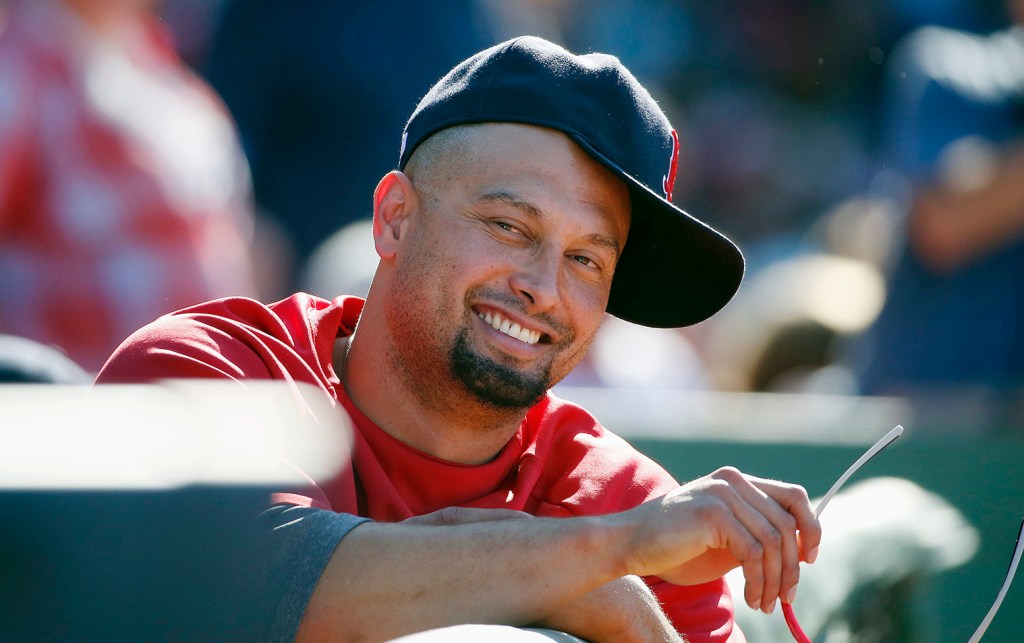The Boston Red Sox reveled last year in the phrase “worst-to-first.”
So now what do we say: “and back again?”
After winning a World Series title in 2013, the Red Sox returned most of their key players. And, still, Boston struggles to stay off the ground floor of the American League East. As Wallace Shawn’s character often said in The Princess Bride:
Inconceivable.
What happened?
Did letting Jacoby Ellsbury go, or signing irritable A.J. Pierzynski make that much difference?
Boston’s fall in 2014 was a result of a miscalculation (and some confusion) on management’s part, one key injury, and a team-wide drop in production on offense.
“There are many reasons,” pitcher Jake Peavy said last week about the downturn. “You can point to a lot of things.
“But at the end of the day, it’s player performance. We have to do better. Nobody is to blame but us.”
General Manager Ben Cherington always includes himself when mentioning blame, so let’s start there.
Cherington’s main task with the 2014 team focused on filling holes left by the exiting Ellsbury, catcher Jarrod Saltalamacchia and shortstop Stephen Drew. Boston had its rotation and key bullpen pieces back.
Gifted outfielder Jackie Bradley Jr. moved to center (after some competition with Grady Sizemore), rookie Xander Bogaerts moved back from third to short, making room for Will Middlebrooks to slide back to third, and Pierzynski was signed to a one-year deal to replace Saltalamacchia.
The three gambles were: 1, there was no obvious replacement for Ellsbury offensively; 2, the left side of the infield would be young and unpredictable; 3, Pierzynski’s history as a poor catcher, free-swinger and non-team player seemed against so many Red Sox philosophies.
Problems arose when Middlebrooks slumped and then was injured; the team’s offense declined and Ellsbury’s absence was obvious; and Pierzynski proved to be a poor catcher, while dropping off offensively.
Bogaerts, who made six errors in 54 games at short (respectable, but not Drew-like), was moved to back to third base, where he never played in spring training as the Red Sox declared over and over again that Bogaerts was their shortstop. Drew was re-signed and rushed to the majors before he was ready, highlighting his offensive limitations even more.
Boston did stumble upon a leadoff batter as utility rookie Brock Holt emerged. Heading into Saturday’s game, Holt had a better OPS (on-base plus slugging percentage) than Ellsbury this year: .777 to .748.
Pierzynski was designated for assignment last week after batting .254 (with a .286 on-base percentage), and rookie Christian Vazquez got called up.
A MISSING PIECE
Among the returning players, perhaps none was more key than right fielder Shane Victorino. In 2013, he battled through a series of nagging injuries to play 122 games, compiling an .801 OPS. He was sensational in the field and clutch at the plate, batting .315 with runners in scoring position.
With Ellsbury gone, Victorino’s spark was needed more than ever.
But the injuries never really went away and Victorino began the season on the disabled list with hamstring trouble. He came back, played only 21 games and returned to the DL with the hamstring acting up and then his back. Victorino was expected to play in Portland on Saturday but was scratched from the lineup. He is expected to play Sunday for Lowell in the Futures at Fenway game and hopes to be in Boston sometime after the All-Star break.
To get another right-handed bat into the lineup, another rookie, the fast-rising Mookie Betts was summoned to play center and right, even though he is natural second baseman.
THE CORE HASN’T PRODUCED
The core group from 2013 was still on the field. But, to a player, their contributions have decreased.
How can you count the ways?
• Runs scored. Boston has gone from the best run-producer in 2013, to last in the American League.
• Slugging. Again, Boston had the best slugging percentage last year (.446), and is last this season (.367).
• RBI. No runs because no one is knocking them in. Another first-to-worst category for Boston.
• Clutch hitting. In 2013, Boston ranked second in batting with runners in scoring position (.278). The Red Sox are 12th this year (.240).
• For those into advanced statistics like WAR (wins above replacement), which measures a player’s contribution to the team, the Red Sox had a collective WAR of 36.6 last year (best in the AL). They are 10th this year (7.4).
• Individually, every offensive player has seen his OPS drop. Basher David Ortiz’s OPS has fallen over 100 points, from .959 to .841; Nava from .831 to .627.
Last year, Mike Napoli came up with big hits so many times with runners in scoring position – batting .257, with nine home runs and 73 RBI. This year: 197, one home run and 24 RBI.
PITCHING SOLID, EXCEPT …
The pitching has been superb for the most part. But there have been disappointments.
Clay Buchholz was 12-1 with a 1.74 ERA last year, and supposedly healthy for 2014. Felix Doubront (11-6, 4.32 last year) was reportedly in better shape and ready to fulfill his huge potential.
Buchholz (3-5, 6.11) began miserably and is slowly working his way back. Doubront (2-4, 5.17) has been sent to the bullpen.
Overall, the Red Sox ERA has slipped some from last year (3.79 to 3.87), but the arms are not Boston’s problem.
Boston is banking on its youth to improve. Five rookies – Holt, Bradley, Bogaerts, Betts and Vazquez – have been in the lineup together. Middlebrooks may get a chance to redeem himself this year. Then there is the young pitching, with Rubby De La Rosa and Brandon Workman already getting starts, and others awaiting their chance.
The goal for the Red Sox is to invigorate this team with energy and talent that (they hope) just needs a little seasoning.
Boston would like to see this worst-to-first-to-worst roller coaster rise to the top again.
Send questions/comments to the editors.







